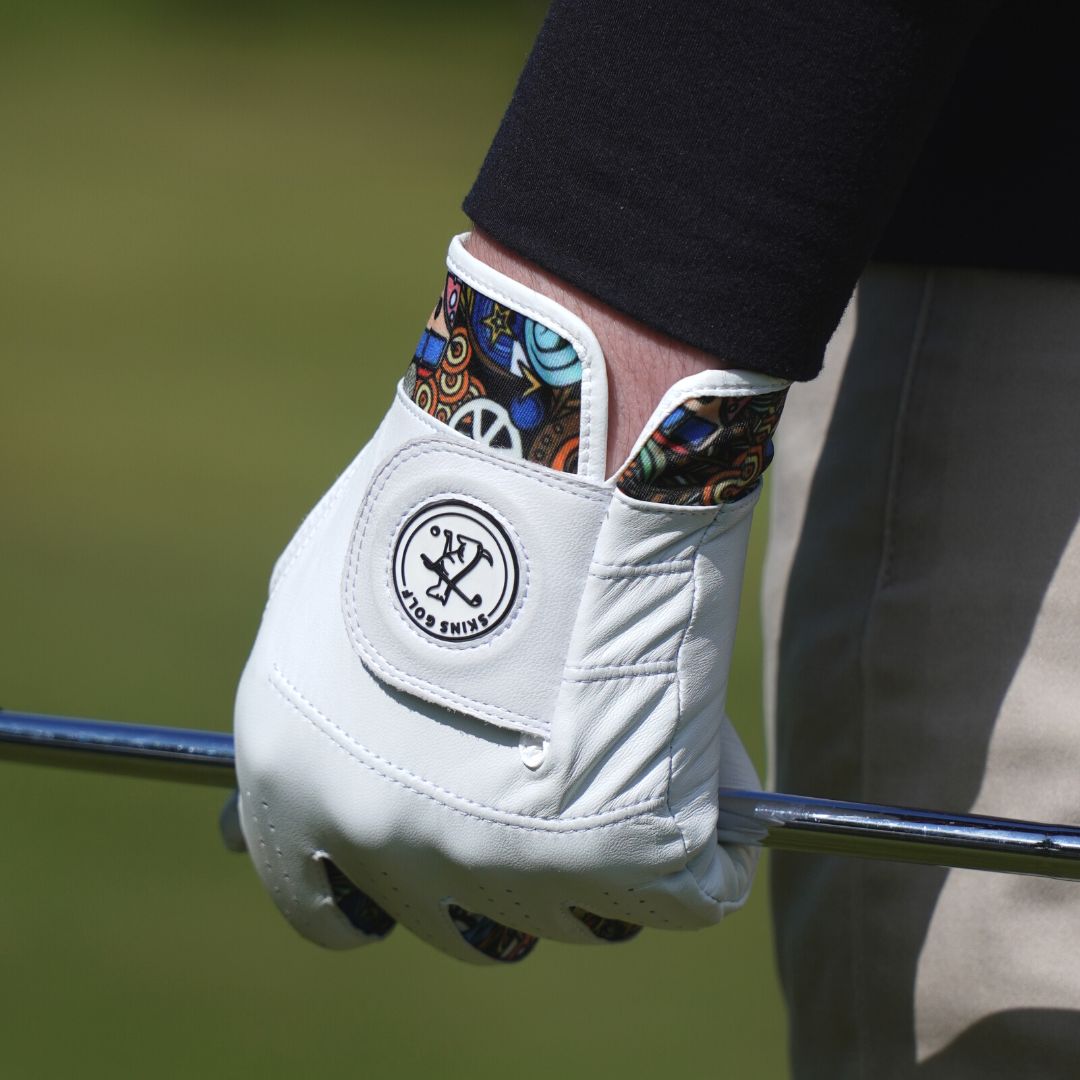The Evolution of Drivers: How Golf Headcovers Have Adapted to Bigger Clubs
Introduction: Bigger Drivers, Bigger Headcovers
If you’ve been playing golf for a while, you’ve probably noticed that today’s drivers are much bigger than they used to be. Over the past few decades, driver heads have increased significantly in size, helping golfers achieve longer distances, more forgiveness, and better overall performance.
But with bigger drivers came a new challenge—how to protect them properly. Traditional driver headcovers were designed for much smaller clubheads, making them ineffective for modern 460cc drivers. As a result, golf headcovers have evolved to accommodate the larger and more advanced drivers used today.
This guide will explore how drivers have changed over time, why this change required bigger and better headcovers, and how to choose the right golf headcovers for golf clubs in today’s game.
The Evolution of Drivers: From Wooden Persimmons to 460cc Titanium Beasts
Early Drivers (Pre-1980s) – Small & Wooden
-
Originally, drivers were made of hardwood, such as persimmon, and had a small, compact head.
-
These clubs required minimal protection, and many golfers didn’t use golf headcovers.
The Transition to Metal (1990s) – Slightly Bigger, More Durable
-
The 1990s saw the rise of metal-headed drivers, such as the original Callaway Big Bertha, which was significantly larger than traditional wooden drivers.
-
These clubs required slightly larger driver headcovers but didn’t compare to today’s oversized clubs.
Modern Titanium Drivers (2000s-Present) – The Era of 460cc Clubheads
-
Over the last 20 years, driver heads have grown to the maximum legal limit of 460cc.
-
Today’s drivers feature larger clubfaces, deeper clubheads, and more aerodynamic shaping, making them bulkier than ever.
-
The rise of adjustable-weight drivers and multi-material construction has also contributed to their increasing size.
Why Bigger Drivers Need Bigger Golf Headcovers
With the shift to larger and more advanced drivers, traditional golf headcovers simply weren’t cutting it. Here’s why:
Bigger Clubheads Require More Coverage
-
A modern driver headcover must fully enclose and protect the clubhead, preventing dings, scratches, and wear.
Increased Shaft Protection
-
As driver lengths increased, many headcovers have been extended to provide additional shaft protection.
Enhanced Padding for Advanced Club Materials
-
Newer drivers are made from lighter, thinner materials, such as carbon fibre, making them more susceptible to dents and scratches.
-
Padded headcovers offer better shock absorption to keep these delicate materials safe.
Weather & UV Protection
-
Larger driver headcovers now incorporate water-resistant and UV-resistant materials to prevent sun damage and rust formation on expensive clubheads.
The Evolution of Headcovers: Adapting to the Modern Game
Early Golf Headcovers: Simple Protection
-
Leather or knit headcovers were the norm for smaller wooden drivers.
-
These provided basic protection but lacked durability for modern, larger clubheads.
1990s – Bigger Headcovers for Metal Drivers
-
With metal woods gaining popularity, slightly larger headcovers emerged, offering better protection and style.
2000s – The Rise of Oversized Driver Headcovers
-
As 460cc drivers became the standard, headcovers had to evolve.
-
Many golf headcovers were redesigned with larger openings, extra padding, and stretchable materials to fit these massive clubheads.
Today – Custom & High-Tech Driver Headcovers
-
Modern driver headcovers are made with high-tech materials like neoprene, synthetic leather, and weather-resistant fabrics.
-
Many feature custom designs, logos, and premium stitching to match a golfer’s unique style.
-
Magnetic closures and reinforced seams help ensure durability and easy removal.
How to Choose the Right Driver Headcover for Today’s Clubs
With so many headcovers for golf available, finding the right one for your driver can be overwhelming. Here are some key factors to consider:
Size & Fit
-
Ensure the driver headcover is specifically designed for 460cc drivers.
-
It should fit snugly without being too tight, making it easy to remove but secure enough to stay in place.
Material & Durability
-
Leather Headcovers → Premium feel, great durability, and classic look.
-
Neoprene Headcovers → Lightweight, flexible, and easy to put on/take off.
-
Synthetic & Waterproof Fabrics → Ideal for all-weather protection.
Design & Customization
-
Choose between traditional, modern, or custom-printed headcovers to match your style.
-
Custom golf headcovers allow you to add logos, names, or unique patterns to your set.
Protection & Padding
-
Look for extra padding or reinforced linings for superior shock absorption.
-
UV-resistant materials help prevent sun damage.
Caring for Your Driver Headcover: Keep It Looking New
A good driver's headcover should last for years and be properly cared for. Here’s how to maintain yours:
Regular Cleaning
-
Leather covers: Wipe them with a damp cloth and condition them occasionally.
-
Neoprene/synthetic covers: Hand wash with mild soap and air dry.
-
Knit covers: Machine wash on a gentle cycle and lay flat to dry.
Proper Storage
-
Don’t store wet headcovers inside your bag—let them air dry to prevent mildew.
-
Keep your headcovers in a cool, dry place when not in use.
Rotate Headcovers
-
If you have multiple headcovers, switch them out occasionally to prevent excessive wear.
Learn More,
Best Cool Driver Headcovers - Stylish Golf Accessories
The Evolution of Golf Headcovers
Evolution of Attitudes Towards Unique Driver Headcovers
Why Golf Headcovers Matter: Protecting Your Clubs in Style
Final Thoughts: The Importance of a High-Quality Driver Headcover
As drivers continue to evolve, so must their headcovers. With larger 460cc clubheads, golfers need durable, well-fitted headcovers to protect their expensive clubs.
At Skins Golf, we offer premium golf headcovers designed specifically for modern drivers. These headcovers provide optimal protection, style, and durability. Whether you prefer a classic leather driver headcover or a bold custom design, we perfectly fit your game.
Ready to upgrade your driver headcover? Check out Skins Golf’s premium collection today!
FAQ: Everything You Need to Know About Driver Headcovers
Why do I need a driver headcover?
A driver headcover protects your clubhead from scratches, dings, and weather damage, keeping your driver in top condition for longer.
Will an old headcover fit my new 460cc driver?
No. Older golf headcovers were designed for smaller drivers and may not fit modern 460cc clubheads. Look for oversized headcovers designed for today’s clubs.
What’s the best material for a driver headcover?
-
Leather for premium durability and style.
-
Neoprene for flexibility and easy use.
-
Synthetic fabrics for waterproof and UV protection.
How do I clean my driver's headcover?
-
Leather → Wipe with a damp cloth.
-
Neoprene/synthetic → Hand wash with mild soap.
-
Knit → Machine wash on a gentle cycle.
How often should I replace my golf headcovers?
If they become loose, torn, or faded, it’s time for a new set!
Upgrade your driver headcover today! Shop Skins Golf’s premium collection and protect your clubs in style.


